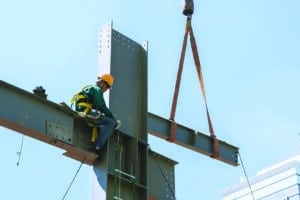Contractors appear to be no longer willing to eat rising material and other costs driven by supply chain kinks, labor shortages and inflation, a new analysis of federal economic data by the Associated General Contractors of America suggests.
“After being battered by unprecedented price increases for many materials, contractors are finally passing along more of their costs,” Ken Simonson, the association’s chief economist, said in a statement. “Meanwhile, supply-chain bottlenecks and labor shortages continue to impede contractors’ ability to finish projects.”
Still, the AGC report says, contractors only appear to be passing on some of these cost increases. Despite a big jump in what contractors charge for projects, the rise in materials prices is still much higher, according to the report, which only looked at national-level construction and input costs and prices.
The Bureau of Labor Statistics’ producer price index for new nonresidential construction, which measures what contractors say they would charge to build several types of nonresidential buildings, jumped 7.1 percent from September to October, while a BLS index of input prices – what contractors must pay to suppliers and service providers – rose 1.3 percent over the same period. Compared to October 2020, the prices contractor say they would charge are up 12.6 percent, while the prices they pay for materials and other inputs have spiked 21.1 percent.
Materials across the supply chain are seeing cost increases, the AGC report noted. The price index for steel mill products more than doubled, soaring nearly 142 percent since October 2020. The indexes for both aluminum mill shapes and copper and brass mill shapes jumped more than 37 percent over 12 months, while the index for plastic construction products rose more than 30 percent. The index for gypsum products such as wallboard climbed 25 percent and insulation costs increased 17 percent. Trucking costs climbed 16.3 percent. The index for diesel fuel, which contractors buy directly for their own vehicles and off-road equipment and also indirectly through surcharges on deliveries of materials and equipment, doubled over the year.
“Supply chain backlogs are clearly one of the biggest threats to the economy recovery,” AGC CEO Stephen E. Sandherr said in a statement accompanying the analysis. “Washington officials need to be more aggressive in taking steps to get key materials moving again so construction firms can continue rebuilding the country.”







